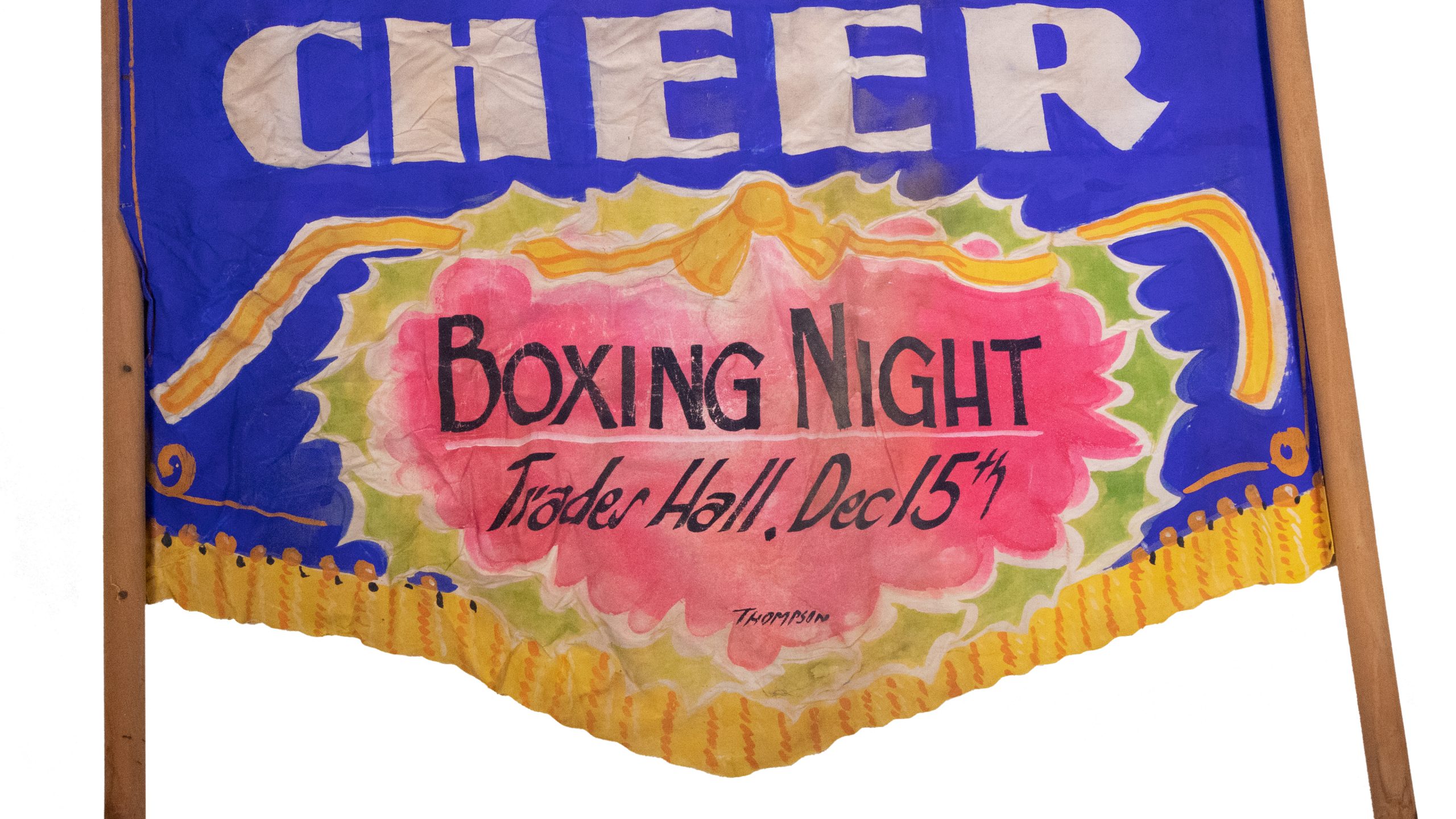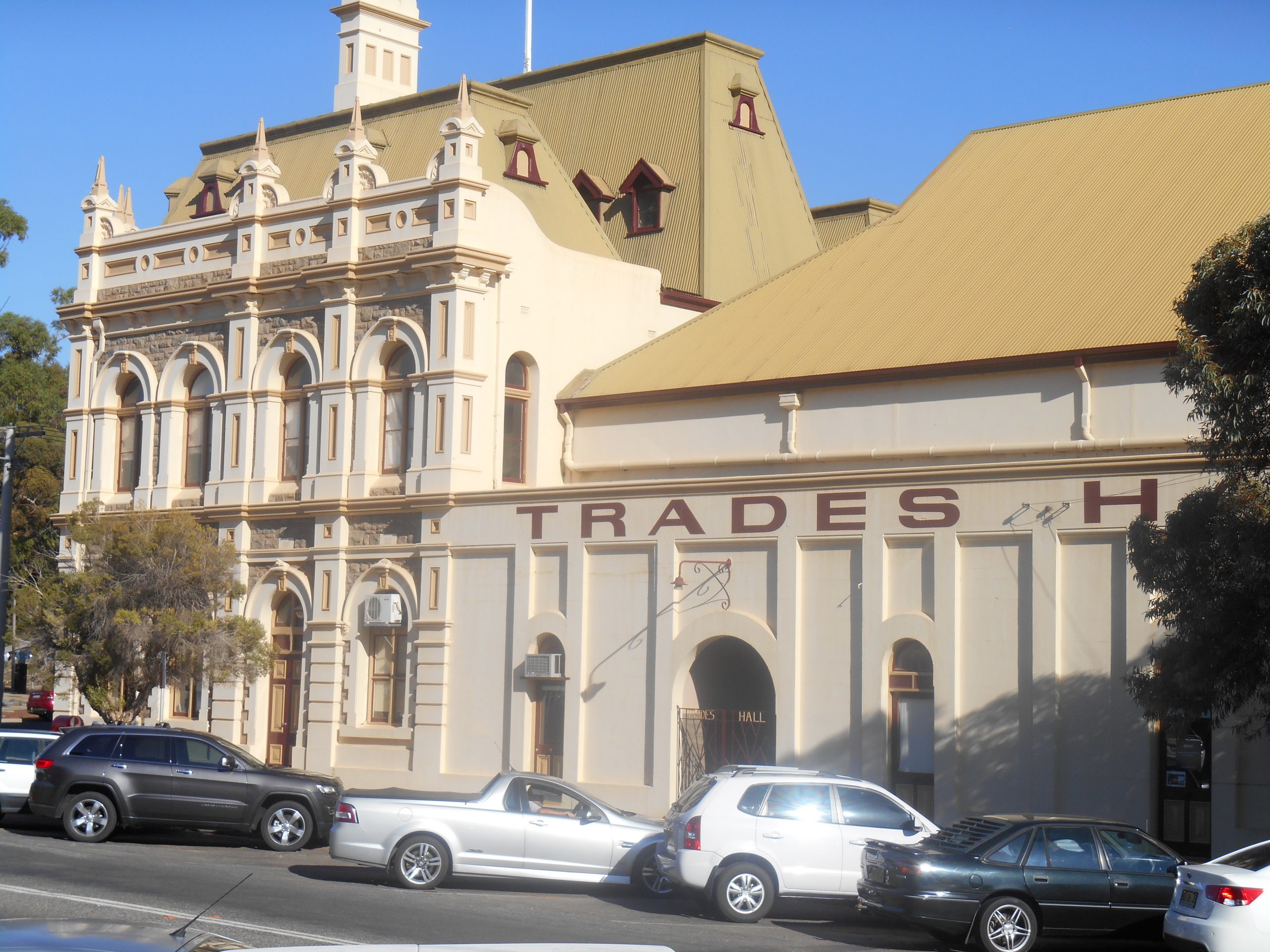Who’ll Take a Glove?
Boxing at Broken Hill's Trades Hall Stadium
Travelling boxing troupes and tent boxing were popular in Australia’s country towns during the first half of the twentieth century, and Broken Hill was no exception. The Broken Hill Trades Hall’s permanent boxing ring was known as the Stadium and promoters regularly toured out-of-town fighters.
Contributing to boxing’s popularity at Broken Hill was its Cornish population, which held fast to many cultural traditions and practiced a unique wrestling style also known as wrassling. Wrassling bouts were usually held on high days and holidays – Christmas, Easter and Midsummer’s Eve (June 24) and the Christmas boxing banner pictured implies that this tradition continued in Broken Hill.
Victorian lightweight boxer Bobby Blay spent three months in Broken Hill from November 1929 to March 1930. The photograph featured shows Blay in his winning bout against Australian featherweight titleholder, Tommy Crowle in March 1930. Blay’s extended stay in the town led to his adoption by the local crowd; their support no doubt contributing to what The Barrier Miner described as Blay being ‘chockful of confidence’ before this bout.
Traditionally considered the domain of the working class, boxing had a chequered past in Australia. Bare-knuckle boxing was illegal before 1900 and bouts were mainly fought in secret. Although the sport was made legal after the introduction of gloves and the Queensberry Rules, the social stigma remained, and boxing was considered morally questionable by god-fearing citizens.
An Australian tour and the attendance of fights by the Marquess of Queensberry, whose name was given to the new rules, helped to endorse and popularise boxing in the late 1800s. Tent boxing troupes touring with country fairs from the 1900s onwards also contributed to the greater acceptance of boxing, Jimmy Sharman’s troupe was one of the most famous.
Many rural youths viewed boxing tents as a way to earn a living and see the country. The relative absence of discrimination in the ring and ability to make some money led to many troupes comprising of a high proportion of young Aboriginal men. Part of boxing’s appeal in the towns they visited was the opportunity for fearless locals to answer the call ‘Who’ll take a glove?’ and try their luck in the ring.






